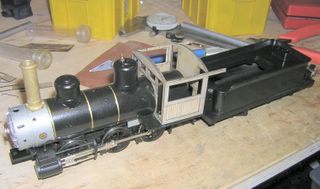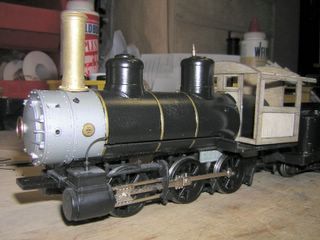The roller gauges were set up for code 100 track and .080" flangeways. In practice, the .080" flangeways are too wide. Despite the fact the scale is relatively large, the wheels that will be employed are bigger HO or medium diameter S scale with an RP25 contour. The gauges will have to be modified for a narrower flangeway.

The wheelsets on the test bogie are Jaybee 36" diameter (HO) with pointed axles. The axles were cut in half and a section of brass tubing was slipped over the stubs to widen the gauge to 1". The frame consists to two flat plate sides with a solid rod spacer at each end fastened with 2-56 screws. The sides are fitted with Markits (Romford) needle bearings for the axles.

The sides were ACC'd together and milled to length. Then the bearing locations were marked, centre drilled, and drilled 5/32". The bearings are held in place with Loctite 242. They slipped into the holes without passing completely through the plate frame. The frame will free-roll down less than a 1% grade.
Motive power for this project will be a 4-wheeled electric trolley with a (non-functioning) pantograph. The chassis will require a 3-point suspension to ensure electrical pickup from the rails.


